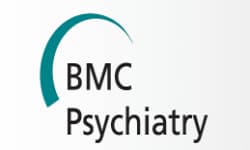 “Medical marijuana is becoming widely available to patients in the U.S. and with recreational marijuana now legalized in many states, patient interest is on the rise.
“Medical marijuana is becoming widely available to patients in the U.S. and with recreational marijuana now legalized in many states, patient interest is on the rise.
The endocannabinoid system plays an important role in skin homeostasis in addition to broader effects on neurogenic responses such as pruritus and nociception, inflammation, and immune reactions. There are numerous studies of in vitro and animal models that provide insight into the possible mechanisms of cannabinoid modulation on pruritus, with the most evidence behind neuronal modulation of both peripheral itch fibers and centrally-acting cannabinoid receptors.
In addition, human studies, while limited due to differences in cannabinoids used, disease models, and delivery method, have consistently shown significant reductions in both scratching and symptomatology in chronic pruritus. Clinical studies that have shown reduction in pruritus in several dermatologic (atopic dermatitis, psoriasis, asteatotic eczema, prurigo nodularis, allergic contact dermatitis) and systemic (uremic pruritus, cholestatic pruritus) diseases.
These preliminary human studies warrant controlled trials to confirm the benefit of cannabinoids for treatment of pruritus and to standardize treatment regimens and indications. In patients who have refractory chronic pruritus after standard therapies, cannabinoid formulations may be considered as an adjuvant therapy where it is legal.”

 “Abnormal
“Abnormal  “γ-Aminobutyric acid type A receptors (GABAARs) are the main inhibitory mediators in the central nervous system (CNS). GABAARs are pentameric ligand gated ion channels, and the main subunit composition is usually 2α2βγ, with various isotypes assembled within a set of 19 different subunits. The inhibitory function is mediated by chloride ion movement across the GABAARs, activated by synaptic GABA release, reducing neuronal excitability in the adult CNS. Several studies highlighted the importance of GABA-mediated transmission during neuro-development, and its involvement in different neurological and neurodevelopmental diseases, from anxiety to epilepsy. However, while it is well known how different classes of drugs are able to modulate the GABAARs function (benzodiazepines, barbiturates, neurosteroids, alcohol), up to now little is known about GABAARs and cannabinoids interaction in the CNS. Endocannabinoids and phytocannabinoids are lately emerging as a new class of promising drugs for a wide range of neurological conditions, but their safety as medication, and their mechanisms of action are still to be fully elucidated. In this review, we will focus our attention on two of the most promising molecules (Δ9-tetrahydrocannabinol; Δ9-THC and
“γ-Aminobutyric acid type A receptors (GABAARs) are the main inhibitory mediators in the central nervous system (CNS). GABAARs are pentameric ligand gated ion channels, and the main subunit composition is usually 2α2βγ, with various isotypes assembled within a set of 19 different subunits. The inhibitory function is mediated by chloride ion movement across the GABAARs, activated by synaptic GABA release, reducing neuronal excitability in the adult CNS. Several studies highlighted the importance of GABA-mediated transmission during neuro-development, and its involvement in different neurological and neurodevelopmental diseases, from anxiety to epilepsy. However, while it is well known how different classes of drugs are able to modulate the GABAARs function (benzodiazepines, barbiturates, neurosteroids, alcohol), up to now little is known about GABAARs and cannabinoids interaction in the CNS. Endocannabinoids and phytocannabinoids are lately emerging as a new class of promising drugs for a wide range of neurological conditions, but their safety as medication, and their mechanisms of action are still to be fully elucidated. In this review, we will focus our attention on two of the most promising molecules (Δ9-tetrahydrocannabinol; Δ9-THC and 
 “Osteoarticular equine disease is a common cause of malady; in general, its therapy is supported on steroids and nonsteroidal anti-inflammatories. Nevertheless, many side effects may develop when these drugs are administered. Nowadays, the use of new alternatives for this pathology attention is demanded; in that sense,
“Osteoarticular equine disease is a common cause of malady; in general, its therapy is supported on steroids and nonsteroidal anti-inflammatories. Nevertheless, many side effects may develop when these drugs are administered. Nowadays, the use of new alternatives for this pathology attention is demanded; in that sense,  “Medicinal cannabis has received increased research attention over recent years due to loosening global regulatory changes.
“Medicinal cannabis has received increased research attention over recent years due to loosening global regulatory changes.
 “Several natural compounds have demonstrated potential for the treatment of central nervous system disorders such as ischemic cerebrovascular disease, glioblastoma, neuropathic pain, neurodegenerative diseases, multiple sclerosis and migraine.
“Several natural compounds have demonstrated potential for the treatment of central nervous system disorders such as ischemic cerebrovascular disease, glioblastoma, neuropathic pain, neurodegenerative diseases, multiple sclerosis and migraine. “Two natural mixtures, Allium sativum fermented extract (BGE) and cannabinol oil extract (CBD), were assessed for their ability to inhibit and remove Pseudomonas aeruginosa biofilms on soft contact lenses in comparison to a multipurpose Soft Contact Lens-care solution present on the Italian market.
“Two natural mixtures, Allium sativum fermented extract (BGE) and cannabinol oil extract (CBD), were assessed for their ability to inhibit and remove Pseudomonas aeruginosa biofilms on soft contact lenses in comparison to a multipurpose Soft Contact Lens-care solution present on the Italian market. “Beta-caryophyllene (BCP) is a dietary plant-derived terpenoid that has been used as a food additive for many decades.
“Beta-caryophyllene (BCP) is a dietary plant-derived terpenoid that has been used as a food additive for many decades.